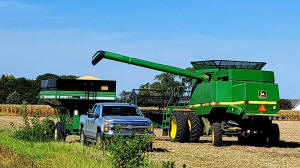|
The comprehensive package of legislation that sets agriculture
policy for the country is supposed to be updated every five
years, but lawmakers can’t come to an agreement. An extension of
the 2018 Farm Bill expired Sept. 30 and it is likely another
extension is in the works.
Illinois U.S. Rep. Mike Bost, R-Murphysboro, said the House has
moved what he called a “very good” Farm Bill out of committee.
He told WGEM TV in Quincy that the farm bill will address a
controversial California initiative that establishes space
requirements for livestock.
“It is a law that was put in place by vote in the state of
California that basically would force our producers here, in the
state of Illinois, to be compliant in their production of hogs,
in this case, by their standards instead of leaving that to the
individual state,” Bost said.
Meanwhile, Mark Schleusener, Illinois state statistician with
the United States Department of Agriculture, said about a
quarter of the soybean crop in Illinois has been harvested.
“Soybeans harvested reached 24%, compared to the 5-year average
of 11%,” said Schleusener. “Soybeans condition was rated 1% very
poor, 4% poor, 23% fair, 57% good, and 15% excellent.”
Corn harvested reached 21%, compared to the 5-year average of
16%.
A familiar site is apparent this time of year in Illinois as
combines are out in the fields. Zach Hinthorn with Country
Financial said motorists should be aware of slower moving
vehicles on the roads.
“Combines are bigger than they have ever been, and it seems like
every year people forget that large equipment is on the roads
during harvest time,” said Hinthorn.
Illinois is the No. 1 producer of soybeans in the country and
the No. 2 producer of corn. |
|




